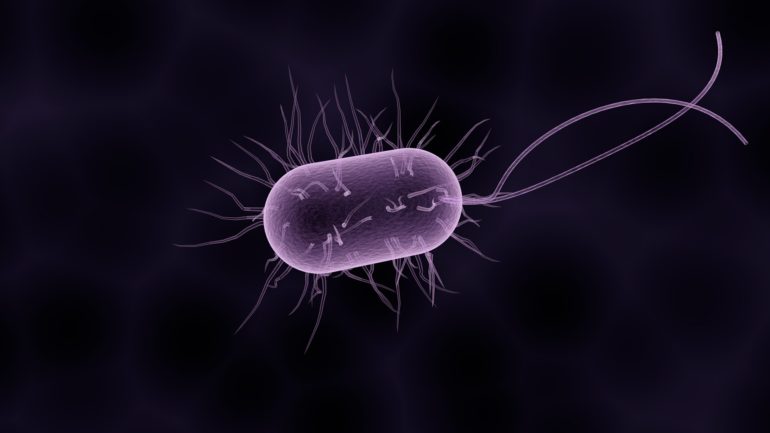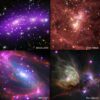An international consortium has reported the largest-ever global metagenomic study of urban microbiomes, spanning both the air and the surfaces of multiple cities. The international project, which sequenced and analyzed samples collected from public transit systems and hospitals in 60 cities around the world, features comprehensive analysis and annotation for all the microbial species identified—including thousands of viruses and bacteria and two archaea not found in reference databases. The study appears May 26 in the journal Cell.
“Every city has its own ‘molecular echo’ of the microbes that define it,” says senior author Christopher Mason, a professor at Weill Cornell Medicine (WCM) and the director of the WorldQuant Initiative for Quantitative Prediction. “If you gave me your shoe, I could tell you with about 90% accuracy the city in the world from which you came.”
The findings are based on 4,728 samples from cities on six continents taken over the course of three years, characterize regional antimicrobial resistance markers, and represent the first systematic worldwide catalogue of the urban microbial ecosystem. In addition to distinct microbial signatures in various cities, the analysis revealed a core set of 31 species that were found in 97% of samples across the sampled urban areas. The researchers identified 4,246 known species of urban microorganisms, but they also found that any subsequent sampling will still likely continue to find species that have never been seen before, which highlights the raw potential for discoveries related to microbial diversity and biological functions awaiting in urban environments.
This project began in 2013, when Mason started collecting and analyzing microbial samples in the New York City subway system. After he published his first findings, he was contacted by researchers from all over the world who wanted to do similar studies in their own cities. He developed a protocol for collecting the samples and posted an instructional video on YouTube. The samples were collected with DNA- and RNA-free swabs and sent to a lab at WCM for analysis, along with positive and negative controls. Much of the analysis and assemblage of sequences is done on an Extreme Science and Engineering Discovery Environment (XSEDE) supercomputer in Pittsburgh, which led to the discovery of 10,928 viruses and 748 bacteria that are not present in any reference databases.
The worldwide interest inspired Mason in 2015 to create the International MetaSUB Consortium (short for Metagenomics and Metadesign of Subways and Urban Biomes), which has since expanded to collecting samples from air, water, and sewage in addition to hard surfaces. The group oversees projects such as Global City Sampling Day (gCSD), held every year on June 21, and has done wide-ranging studies including a comprehensive microbial analysis of Rio de Janeiro’s city surfaces and its mosquitoes before, during, and after the 2016 Summer Olympics. Another project, launched in 2020, is focused on investigating the prevalence of SARS-CoV-2 and other coronaviruses in domestic cats, and a project also is planned for the 2021 Tokyo Olympics.
The new research has implications for detecting outbreaks of both known and unknown infections and for studying the prevalence of antibiotic resistant microbes in different urban environments. It also can contribute to new discoveries about the evolution of microbial life. MetaSUB researchers in Switzerland (Andre Kahles and Gunnar Rätsch) also released a searchable, global DNA sequence portal (MetaGraph, https://metagraph.ethz.ch/search) that indexed all known genetic sequences (including MetaSUB data), which maps any known or newly discovered genetic elements to their location on Earth and can aid in the discovery of new microbial interactions and putative functions.
“There are millions of species on Earth, but we have a complete, solid genome reference for only 100,000 to 200,000 at this point,” Mason says, explaining that the discovery of new species can help with the building of microbial family trees to see how different species are related to one another.
The findings also have many potential practical applications. “Based on the sequence data that we’ve collected so far, we’ve already found more than 800,000 new CRISPR arrays,” he says. Additionally, the findings indicate the presence of new antibiotics and small molecules annotated from biosynthetic gene clusters (BGCs) that have promise for drug development.
“One of the next steps is to synthesize and validate some of these molecules and predicted BGCs, and then see what they do medically or therapeutically,” Mason says. “People often think a rainforest is a bounty of biodiversity and new molecules for therapies, but the same is true of a subway railing or bench.”
Microbial diversity below seafloor is as rich as on Earth’s surface
More information:
Cell, Danko et al.: “A global metagenomic map of urban microbiomes and antimicrobial resistance” www.cell.com/cell/fulltext/S0092-8674(21)00585-7 , DOI: 10.1016/j.cell.2021.05.002
A related paper (“Characterization of the public transit air microbiome and resistome reveals geographical specificity”) publishes in the journal Microbiome on May 26.
Citation:
Global study of 60 cities’ microbes finds each has a signature microbial fingerprint (2021, May 26)
retrieved 26 May 2021
from https://phys.org/news/2021-05-global-cities-microbes-signature-microbial.html
This document is subject to copyright. Apart from any fair dealing for the purpose of private study or research, no
part may be reproduced without the written permission. The content is provided for information purposes only.



